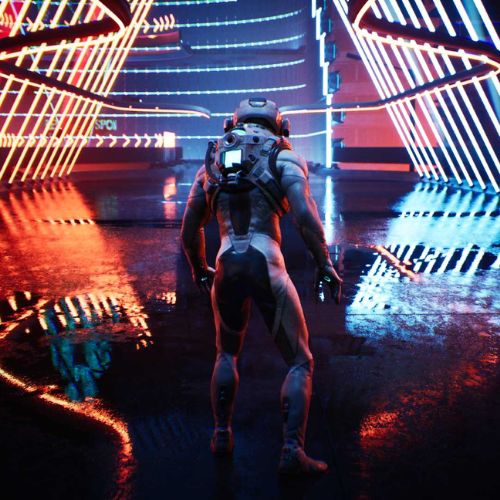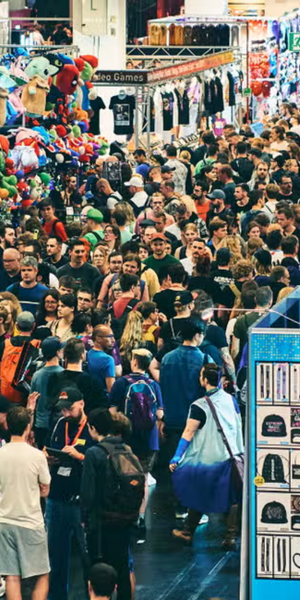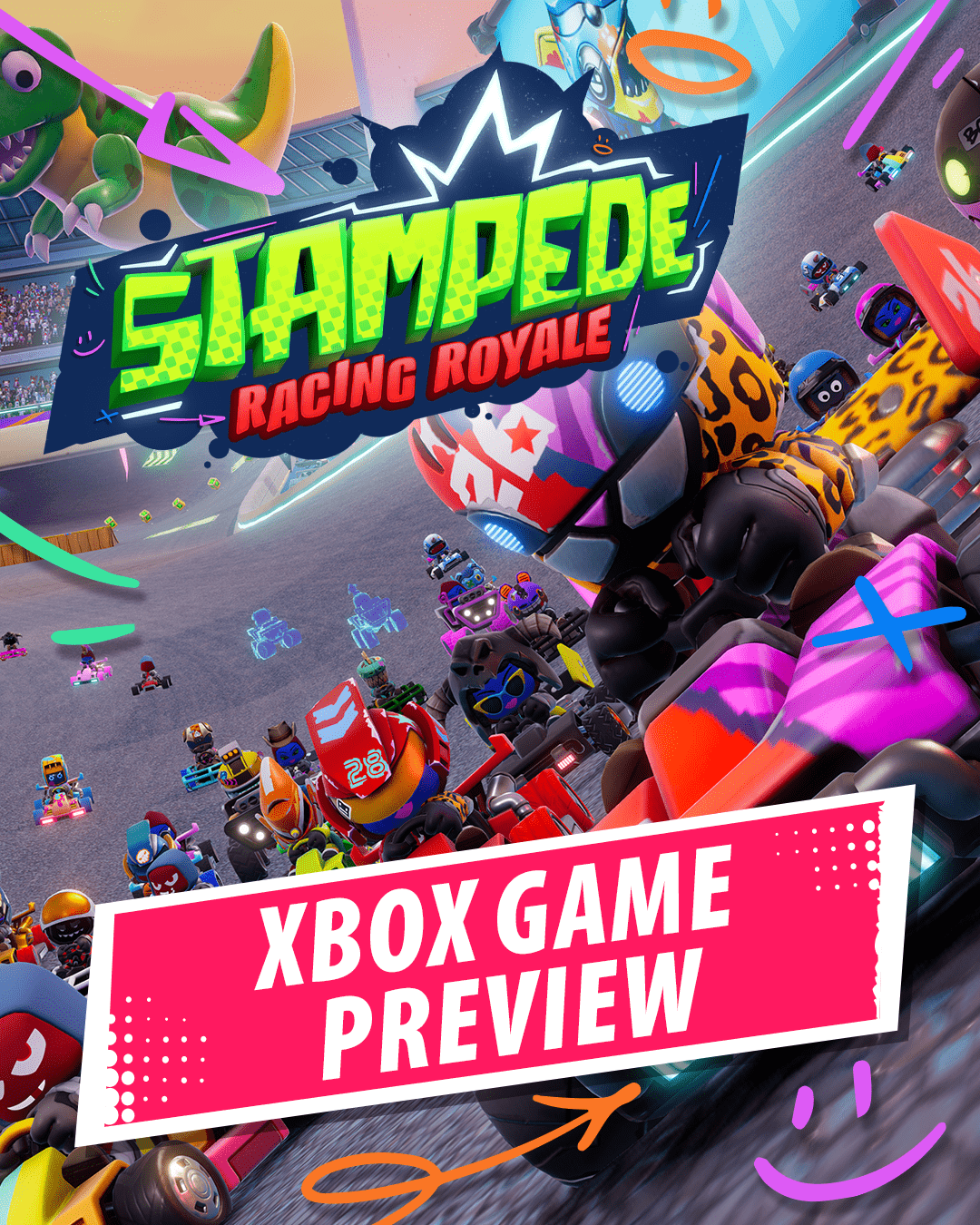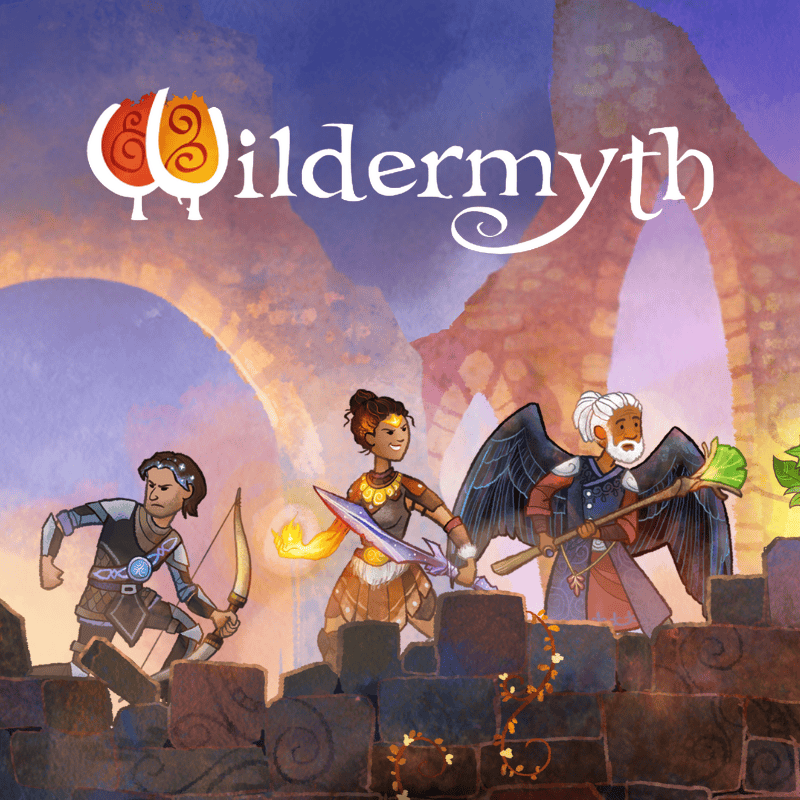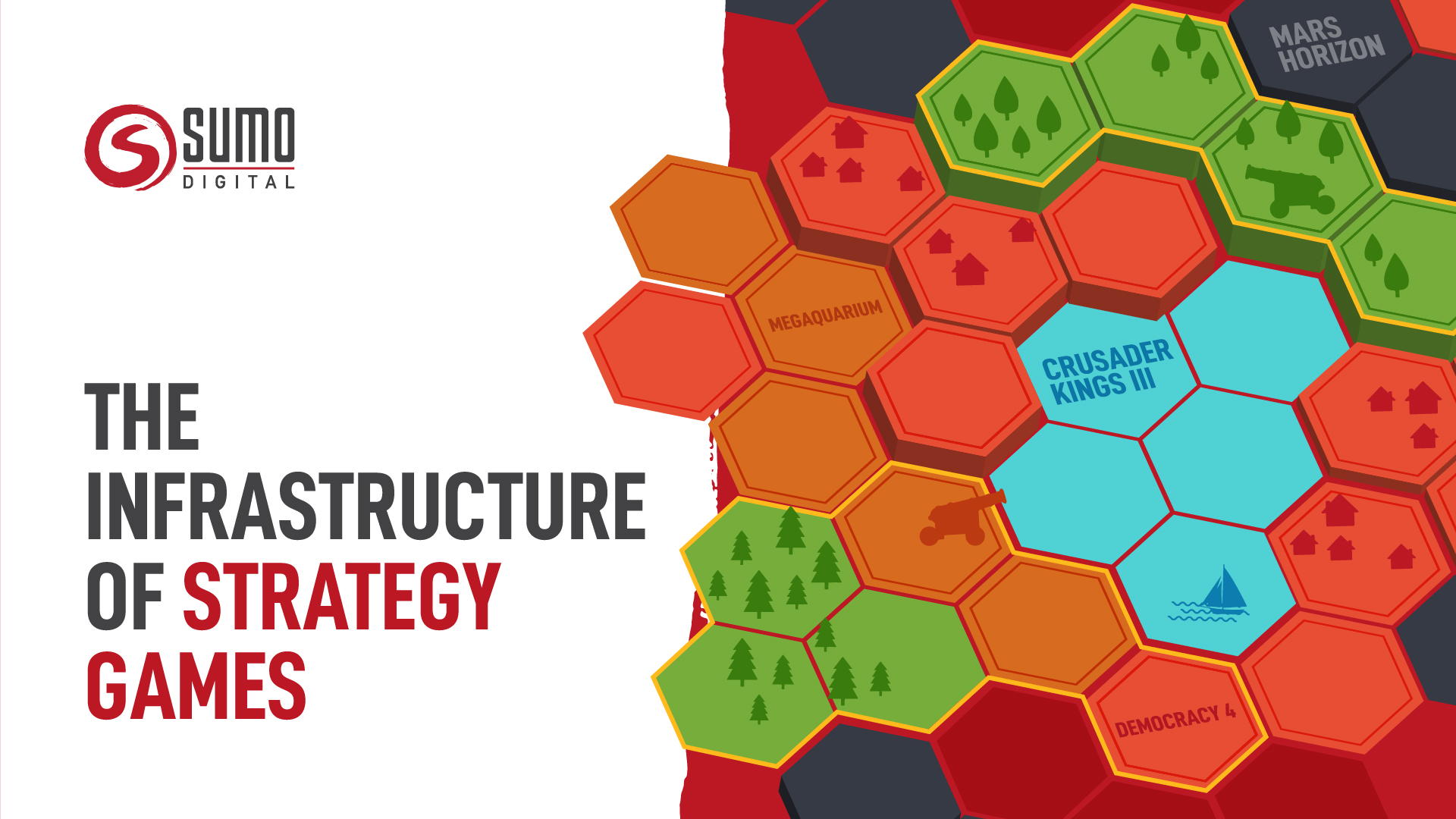It’s been over 50 years since players were first introduced to racing games, with the black-and-white top-down racer Gran Trak 10, released by Atari in May of 1974. Games have come a long way since then but one thing remains the same: the world loves a racing game.
Throughout the last semi-centennial, we’ve had the opportunity to experience a range of eclectic racing game styles, and with each new generation of console and gamers comes new ways to get behind the wheel and accelerate.
Racing is perhaps the most expansive genre in gaming – there are limitless ways that racing mechanics have been utilised to create wildly different racing games. Whether it’s the limitless, open-world driving in Forza Horizon, high-speed simulation like the DiRT and DiRT Rally series, the chance to experience the authentic experience like the F1 series… or being kept awake by the ever-present threat of having to win Rainbow Road at 150cc: racing games offer something for everyone to enjoy.
For Sumo Digital, racing games are an integral part of our DNA. From working on OutRun 2 way back in 2004, our teams have worked on some of the brightest and best racing games on the market. With our latest release, Stampede: Racing Royale, currently unleashing racing chaos on Xbox Game Preview: we wanted to take a deep dive into the history of racing games, what makes them fun to play, our need for speed, and explore whether they can improve our skills in the real world.
So with our seatbelts on and pre-driving checks done: let’s d(r)ive in.
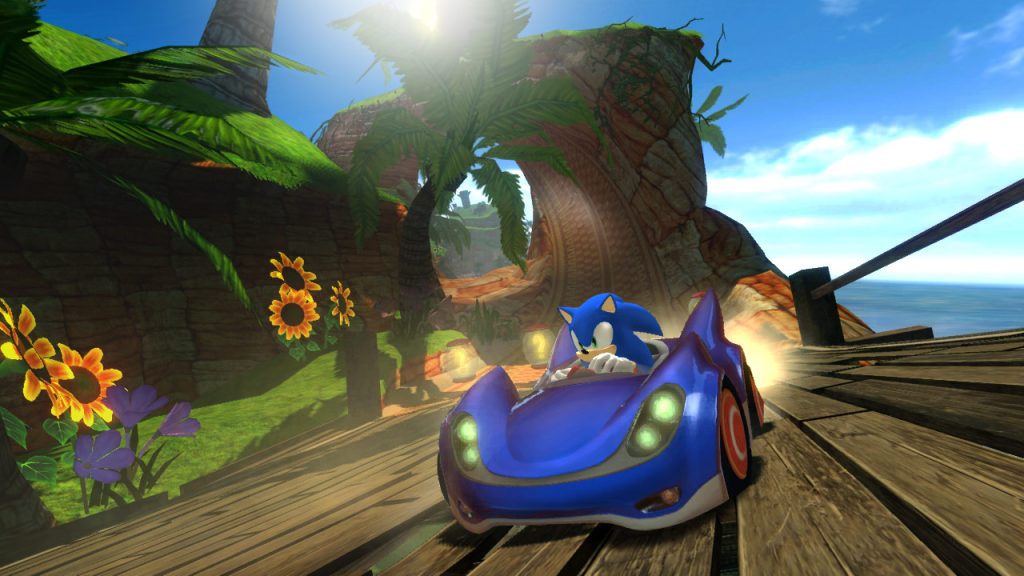
[Image: Sonic & Sega All Stars Racing. The only way for Sonic to *get* any faster is to put him behind the wheel of a high-powered car.]
LEGACY LAPS | THE SUCCESS OF RACING GAMES
In 2023, the Racing Games Market Size was valued at $2.17bn and is projected to continue to grow at an annual rate of 10.2% between now and 2032. There are lots of factors that are unique to the genre which make it such a behemoth within the games industry, including highly engaged and loyal audiences, growing interest in IRL motorsports like F1 amongst a younger demographic and new, ever-evolving technology enabling developers to push the mechanics to the limits.
Let’s talk Audiences: Racing is also wide ranging in the audience it caters for, making it accessible to the masses. There’s an elegant simplicity to racing games that players innately understand: you have to drive fast to come first. This simplicity means it doesn’t matter what style of racing game you create – whether that be hyper realistic, cartoon, arcade or otherwise – there are core mechanics that players are able to understand and enjoy.
When it comes to Technology, throughout history, consoles have launched with a racing game to showcase their power and abilities, like Need for Speed: Most Wanted releasing with the Xbox 360 back in 2005, Ridge Racer V being a launch game for PlayStation 2, and not forgetting Mario Kart 8 – which released first on the Wii U and then Nintendo Switch, and became the best-selling racing game of all time. And, as tech continues to evolve, more players are also able to get online and battle it out with friends which can lead to more live-streamed content and awareness for a title.
Part of the appeal of racing games is the Competition. Whether it’s a multiplayer experience where you race against other people in a social environment, or a single-player with CPU opponents – you have the opportunity to master driving mechanics in tandem with learning the environments you’re racing within. Some people are focussed on improving their time or poll position, and others just want to have fun and wear great customisation, and racing games have something for everyone regardless of skill-level of preferred playstyle.
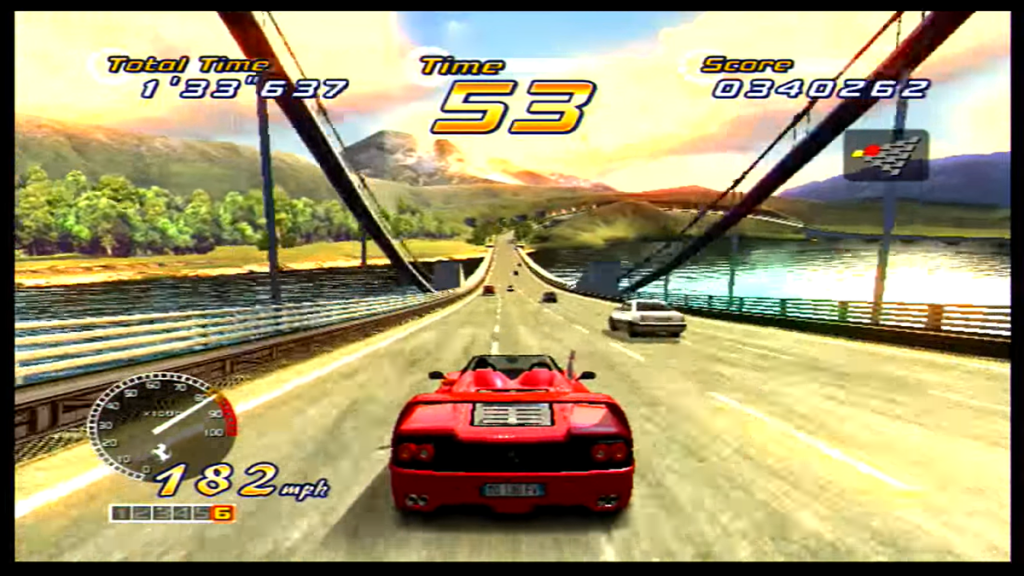
[Image: OutRun 2. Experience a coastal drive at full speed!]
SUMO DIGITAL’S LOVE OF RACING GAMES
In our 20-year history, Sumo has done its fair share of racing games. Starting in our early days of taking fan-favourite SEGA game OutRun2 from an arcade machine game, to one players could pick up in their living room on the original Xbox – we have always loved getting behind the wheel of racing games. Someone who’s been there through the thrills, chills and (oil) spills of it all is Steve Lycett, Franchise Development Director at Sumo Sheffield and here, he shares some of his fondest memories of working on racing games:
“We’ve always been prepared to hone, polish and revise until an experience feels right” says Steve. “When SEGA came to us in 2004 about bringing OutRun2 to console, they didn’t believe that a straight port could justify the £40 retail price but we immediately set about expanding the game into something more for a whole new audience. We took everything we knew about racing games and their players, and incorporated them into the game – we bought in mission mode and online play, and spend a lot of time ensuring the driving felt fun, all whilst ensuring the personality of the game remained intact. The game was praised by critics and players alike, and (in combination with our work on Toca Race Driver 2) set Sumo up as a safe pair of hands when it came to racing games.
“We took all of our learnings from our previous experiences and channeled them into our own racing game: Sonic & Sega All-Stars Racing. For this project, we were able to combine iconic IP, speed, arcade accessibility and inviting visuals to create a ‘tightly developed racer with a lot of charm and character of its own’ (thanks IGN!).
“When you’re making a racing game, there is huge pleasure in finding the perfect mix of camera, field of view, position, speed of motion and incorporating all the little tricks to make players feel like they’re driving faster and faster. It’s an incredibly enduring genre and one that is beloved by players of all ages, abilities and access, and one that I always love returning to. I could boot up OutRun2 tomorrow and it would still feel as good as it always did!”
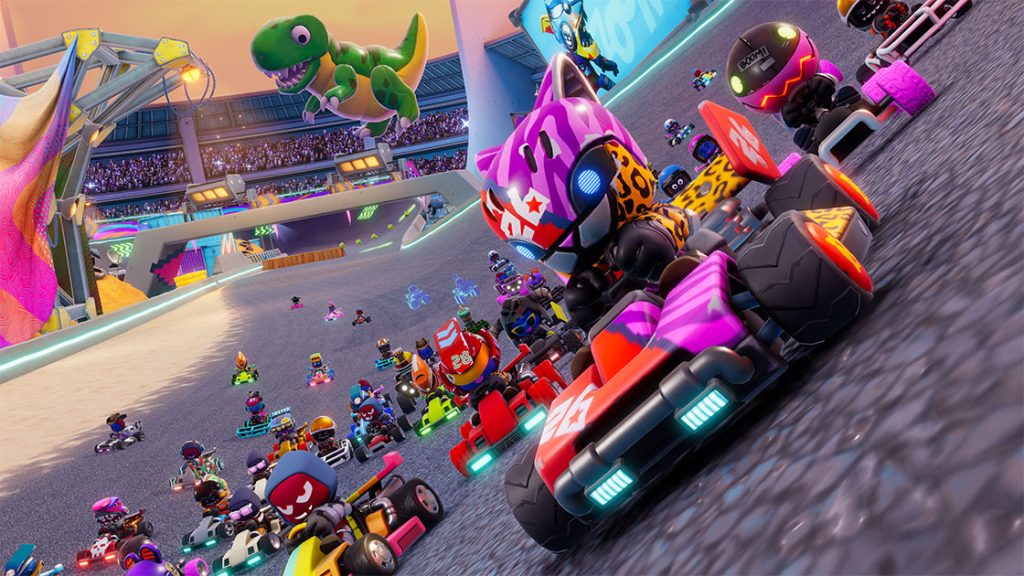
[Racers take to the track in Stampede: Racing Royale. Players can experience high-speeds, high-chaos and high-fashions from Sumo Leamington’s battle-royale kart racer.]
THE PIT STOP | WHAT MAKES A GOOD RACING GAME
Did we mention we’ve made a fair few racing games in our time? Here, Steve is joined by engine-expert and petrol-pundit Chris Southall (Studio Director) from Sumo Leamington who has a wealth of racing titles under his belt including Colin McRae Rally, GRiD and more, to get under the hood of what goes into making a podium-worthy racing game:
Get the sense of speed right: “In any racing game, you need to give players a breadth of speeds and have them all feel authentic and accurate. No player wants to be going full-throttle with a controller, only to find their car is idling along at 30. To do this, developers can make sure the camera is low and wide so you can get a sense of speed and movement, or to create audio that sounds like the engine is always accelerating even if you’re already at top speed. Generally, if it looks fast and sounds fast, you’re most of the way there! It’s also important to make players feel like they’re at the edge of control, like they know the parameters they can change to shave off those precious seconds to steer their way to victory next time.” – Steve
A learning curve: “While most racing games have a purity to them that make them easy enough for anyone at any skill level to pick up and play, the most enduring ones are those that have the option to go on a learning curve and grow your skills. This enables players to play their way: for some, they want to race around in a social setting and have fun doing it, where others want to learn the tracks and mechanics and perfect their techniques. In my opinion, the very best racing games are the ones where you know you could shave off a few more seconds if you got the lines just right.” – Steve
Physics and Handling: “Whether it’s a sim, arcade sim or realistic experience, having solid, predictable reactions to the input of a player, depth in how a vehicle behaves in a variety of situations, or how a vehicle changes depending on upgrades/customisation gives the player the opportunity to work towards mastery. Furthermore, capturing the handling feel of different models of cars means you’re granting players the opportunity to drive any real-world car, which is a key draw to why people love to play them.” – Chris.
Make the most of audio: “While you might think the primary focus of racing games is to perfect the controls, there’s actually a lot of audio work happening to immerse you into the action. Not only does the SFX for the vehicles have to feel authentic and empowering, but the music has to be driving and add to the pacing of the game: no one wants to be listening to piano sonatas while they’re speeding around a course!” – Steve
Capturing Competition: “Part of the appeal of racing games is the desire to perform well and win. Ways to do this include having strong social mechanics, so players have the opportunity to share their wins with the world, offering plenty of achievements to be earned, or to have collectables or unlockables for players to pick up and discover. Those, combined with progression and variety, form a great foundation for a racing game.” – Chris.
Environments: “The euphoric feeling of driving along beautiful roads laden with stunning scenery and panoramic views is one I personally love to get from a racing game. But whether your game is an open-road driving experience, or a tight, on-track trial, it’s important to get the environment surrounding the action right. It has to be the right balance between ambient and not distracting, with lots of fine-tuned details for the optimal driving experience – from the weather, to the width of the road!” – Steve
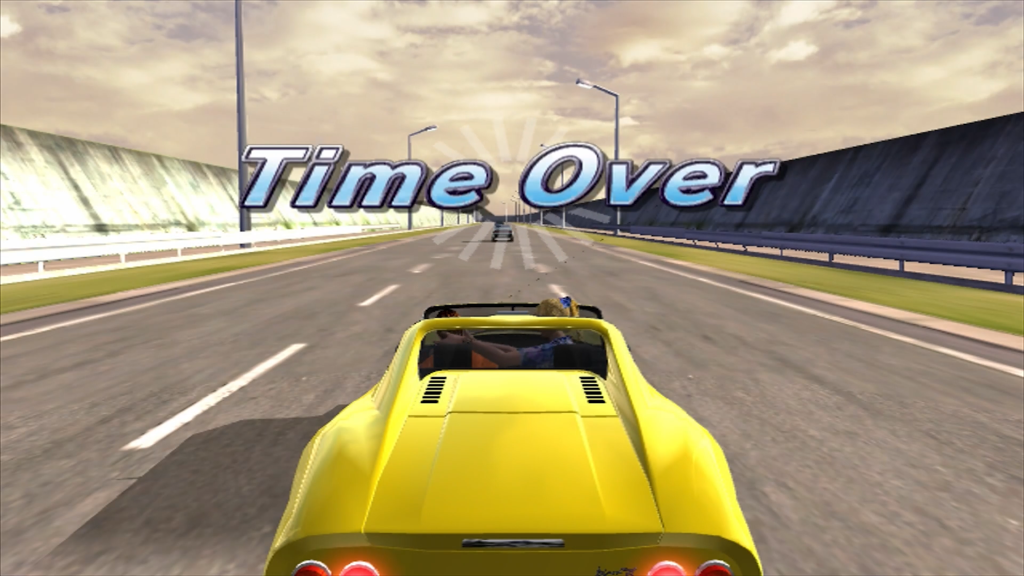
[Image taken from OutRun 2006: Coast 2 Coast. A portrait of family bliss, as the driver fails on one of the game’s unique ‘Don’t Lose Your Girlfriend’ mode.]
THE NEED FOR SPEED | WHY WE LOVE TO GO FAST
Since the inception of the automobile in the late 1800s, we’ve been fascinated with cars. Giving us a combination of freedom, piquing a cross-section of interests including technology, design and aesthetics, and even offering a sense of community and belonging for the super-interested… and, of course, the love of speed and competition.
But why is it that we love the exhilaration of speed?
A commonly found personality trait in humans is that of a ‘sensation seeker’. Coined by celebrated psychologist Professor Marvin Zuckerman, ‘sensation seeking’ is defined as the search for feelings and experiences that are ‘varied, novel, complex and intense’. In his research, Zuckerman developed the ‘Sensation Seeking Scale’ which is designed to test an individual’s tendency towards various sensations, including Thrill and Adventure Seeking… like the desire to engage in sports or other activities involving speed and, sometimes, danger.
These danger dwellers are often the first people to volunteer to ride the biggest rollercoasters, make death-defying leaps from planes or get involved in adventurous antics. And when they do, their brain releases more dopamine and they feeler a higher sense of satisfaction – not dissimilar to what we experience when we play horror games or watch horror films.
So when we pick up a racing game and participate in a high-speed car chase, race towards the finish line or look to beat out our opponents on the track – our brains are responding to the close encounters and high-speeds to have us operating at our peak performance. The Yerkes-Dodson law best describes the relationship between performance and stress, and racing is one gaming genre which really pushes our nerve and skills. When we’re driving at high speeds in games and feeling the heat of the competition, our brains are pushing us into a place of optimal arousal and, therefore, optimal performance. This fine line explains why a simple oversteer can send us into a tailspin on the virtual track!
Video games are the perfect medium for offering players a whole range of emotions and a wide range of experiences in a relatively safe environment. And racing games are not only an accessible way to experience all the emotions and experiences that cars can offer, but also grant players the immediacy of wish fulfilment… who amongst us hasn’t sat in traffic of a morning and wished for clear, open roads (complete with beautiful skies and a great playlist) to traverse? Racing games give us all of that, plus higher powered, more exotic vehicles to do it in.
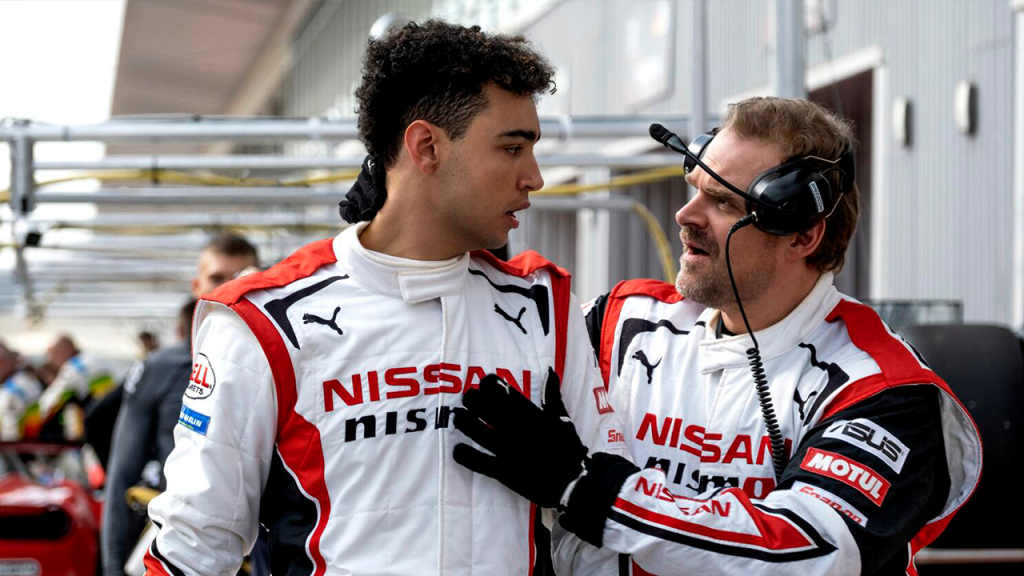
[Archie Madekwe and David Harbour in Gran Turismo (2023). Copyright by Sony Pictures, Columbia Pictures and other relevant production studios and distributors.]
OFF THE TRACK | THE BENEFITS OF RACING GAMES
There are only a handful of games that can teach real-world skills to a level at which you’re able to pick it up as an actual career. Being great at Red Dead Redemption doesn’t make you a qualified equestrian, and unfortunately the knife skills you pick up (when you’re yelling at your friends and family for setting fire to the kitchen for the fifth time) in Overcooked probably won’t land you a career as a chef… but what about racing games?
For one pro-racer, his skills with pixels in Gran Turismo eventually led him to a position on the Le Mans podium. Jann Mardenborough first picked up the racing simulator as an after-school activity and went on to land a spot in the GT Academy after finishing in the top 20 in the UK. Jann’s story is one for the history books and has even caught the attention of Hollywood with the Gran Turismo film which released in the summer of 2023.
For most of us, racing games are a great way to blow off steam, battle our friends and live out our F1 and NASCAR dream with the chances of us actually hitting those tracks at top speed in real life looking slim… But can racing games actually help us become more mobile, alert and reactive?
Well, yes, actually. A 2016 study published in Psychological Science found that playing ‘action’ games – including racing games – can actually make us better drivers. The study found that gamers who pick up these titles have better lane-keeping and visuomotor-control skills, and that experience matters: participants who were seasoned in action and racing games showed more precision compared to those with little to no experience. It’s also been found that playing racing games can improve hand-eye coordination, better and quicker decision making and build more confidence behind the wheel of the real thing.
In 2016, F1 driver Max Verstappen hit media headlines when he shared a video using the Red Bull Racing’s driver simulator: the ultimate training tool for F1 drivers. Featuring a full-size rig complete with a force feedback paddle steering wheel, an integrated screen, adjustable racing pedals, AOC gaming screen and a Z906 Ultimate THX Surround Sound speaker system… it’s basically the world’s fanciest racing gaming set up that is used to train actual race car drivers.
And that’s not all: racing games are a great way of improving your reflexes and reaction time. In 2010, the University of Rochester conducted a study that tested games and decision making, and found that action video game players – including racing games – are more efficient collectors of visual and auditory information, and therefore arrive at the necessary threshold of information they need to make a decision much faster than non-gamers. Professor of Brain and Cognitive Science, Daphne Bavelier, summarised: “It’s not the case that the action game players are […] less accurate: they are just as accurate and also faster. Action game players make more correct decision per unit time. Decisions are never black and white. The brain is always computing probabilities. As you drive, for instance, you may see a movement on your right, estimate whether you are on a collision course, and based on that probability make a binary decision: brake or don’t brake.”.
So the next time you pick up your favourite racing title (we recommend Stampede: Racing Royale, but we might be biased…), remember that the skills you learn on the screen may well be translating to you becoming a more reactive, decisive and responsive driver.
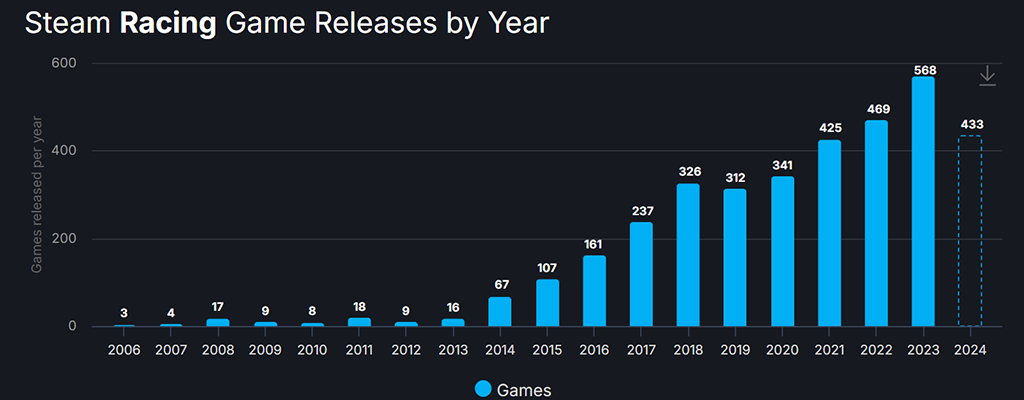
[Screenshot taken from SteamDB for search term ‘Racing Game Releases by Year’, in August 2024. Racing Games have been on a steady incline for the last decade, releasing an average of 310 games per year.]
THE DESTINATION | WHAT’S NEXT FOR RACING GAMES?
Whilst racing games might have been pedal to the metal for the last 50 years, they show no signs of hitting the breaks just yet. According to Steam DB, 2023 was the biggest ever year for racing games released onto the platform – with 591 high-speed titles drifting into action including Forza Motorsport, Make Way and Lego 2k Drive.
2024 is already on the way to overtaking last year’s release numbers, and over the next couple of years, there are some heavy-hitters in the world of driving IP on their way: including Grand Theft Auto VI which is due to release in Autumn 2025, and earlier this year, managed to overtake some of gaming’s biggest IP as it climbed to the second most-watched video game trailer of all time – amassing almost 194M views in its first six months. Also on the horizon is the hotly anticipated release of the successor to the Nintendo Switch, which is rumoured to launch in April 2025 and is tipped to launch with the next instalment of the Mario Kart franchise.
With a catalogue of titles spanning over 50 years, racing games are surely one of the most enduring and popular genres, with each generation able to find their favourites and discover their love of all things racing. So whatever your preferred driving style, be sure to check your fluid levels, mirrors and tires before setting off – you never know what the track could hold!
All this driving talk got you geared up? Talk to us about putting the wheels in motion for your next project over on the Services Page.
Stampede: Racing Royale is currently available to play for free on Xbox Game Preview for Series S | X and Windows via the Xbox App. You can find out more about this karting-chaos game on the Stampede website.
If you’re hungry for more racing content, Steve Lycett (Franchise Development Director at Sumo Sheffield) recently wrote about some of the iconic moments in racing game history that paved the way for future releases – including new features, modes and ways to play. You can read all about it here.



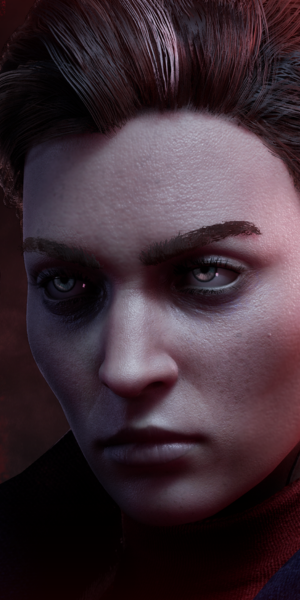 Vampire The Masquerade: Bloodlines 2
Vampire The Masquerade: Bloodlines 2 Exoborne
Exoborne Mars Horizon 2: The Search for Life
Mars Horizon 2: The Search for Life
